- Home
- Oscar Wilde
The Uncensored Picture of Dorian Gray
The Uncensored Picture of Dorian Gray Read online
THE UNCENSORED PICTURE OF DORIAN GRAY
THE UNCENSORED PICTURE OF DORIAN GRAY
OSCAR WILDE
EDITED BY
NICHOLAS FRANKEL
THE BELKNAP PRESS OF HARVARD UNIVERSITY PRESS
CAMBRIDGE, MASSACHUSETTS • LONDON, ENGLAND • 2012
Previously unpublished and copyright-protected material from the typescript of The Picture of Dorian Gray copyright © 1962, 2000, 2011 by The Estate of Oscar Wilde
Additional content copyright © 2011 by the President and Fellows of Harvard College
All rights reserved
Cover art: John Singer Sargent, Man Wearing Laurels, Los Angeles County Museum of Art. Digital image © 2009 Museum Associates / LACMA. Licensed by Art Resource, NY.
Cover design: Annamarie McMahon Why
Library of Congress Cataloging-in-Publication Data Wilde, Oscar, 1854–1900.
[Portrait of Dorian Gray]
The uncensored picture of Dorian Gray / Oscar Wilde ; edited by Nicholas Frankel.
p. cm.
Includes bibliographical references.
ISBN 978-0-674-06631-1 (pbk. : alk. paper)
1. Appearance (Philosophy)—Fiction. 2. Conduct of life—Fiction. I. Frankel, Nicholas, 1962– II. Title.
PR5819.A2F73 2012
823′.8—dc23 2012010044
For Susan
CONTENTS
PREFACE
GENERAL INTRODUCTION
TEXTUAL INTRODUCTION
The Picture of Dorian Gray
NOTES
APPENDIX
The 1891 Preface to The Picture of Dorian Gray
FURTHER READING
ACKNOWLEDGMENTS
PREFACE
Oscar Wilde’s typescript of his only novel, The Picture of Dorian Gray, remained unpublished until 2011, when it appeared under the title The Picture of Dorian Gray: An Annotated, Uncensored Edition as part of Harvard University Press’s annotated series of classic literary works. Like The Picture of Dorian Gray: An Annotated, Uncensored Edition, this paperback edition is based on the typescript submitted by Wilde to Lippincott’s Monthly Magazine in 1890, whereupon an alarmed J. M. Stoddart, the magazine’s editor, quickly determined the novel, at least in its present form, would offend the sensibilities of his readership. Especially troubling to Wilde’s editor were instances of graphic sexual—especially, homosexual—content he found in the typescript. In consultation with his publishing associates, Stoddart struck words, phrases, and whole sentences from Wilde’s typescript. The introductory essays that follow explain the commercial, social, and legal imperatives that motivated changes to both Wilde’s typescript and the subsequent and expanded book edition of 1891, published by Ward, Lock, and Company. This edition restores all of the material excised by Stoddart and his colleagues.
Literary scholars often speak of publication as a process of collaboration between publishers and authors; however, the reality is often far different. The relations between Victorian journal editors and their authors presumed a sharp imbalance of power, especially where first-time novelists were involved. Thomas Hardy complained in 1890 that “the patrons of literature—no longer Peers with a taste—acting under the censorship of prudery, rigorously exclude from the pages they regulate subjects that have been made . . . the bases of the finest imaginative compositions since literature rose to the dignity of an art.” In the case of Wilde’s novel, the evidence that Stoddart censored it is plain from the sexual and political nature of his deletions, such as his removal of Basil Hallward’s confession: “There was love [for Dorian] in every line [of the portrait], and in every touch there was passion.”
Further evidence can be found in Stoddart’s panicked reaction upon receipt of Wilde’s typescript. “Rest assured that it will not go into the Magazine unless it is proper that it shall,” he told his employer, Craige Lippincott. “In its present condition there are a number of things which an innocent woman would make an exception to. But I will go beyond this and make it acceptable to the most fastidious taste.” Before committing himself to publication, Stoddart assigned Wilde’s typescript to no fewer than five publishing professionals for comment—one of whom he later charged with “picking out any objectionable passages.” Wilde did not see these changes to his novel until after it appeared in print.
American literary critic Elaine Showalter has characterized the milieu in which Wilde lived and wrote as one of “sexual anarchy.” Stoddart’s edits must be seen within the wider context of the sexual paranoia and legal threat apparent in the late 1880s and early 1890s. The circumstances under which Dorian Gray was published are a far cry from those faced by the majority of English-language authors either before or since. The 1885 Criminal Law Amendment Act outlawing “gross indecency” between men, the establishment of the National Vigilance Association in 1885 (it successfully brought about a jail sentence for Henry Vizetelly, translator of Emile Zola’s works, in 1889), and the Cleveland Street Scandal of 1889–1890 all served to bring about a heightened atmosphere of paranoia and intolerance, particularly where upper-class and well-educated English homosexuals were concerned. Indeed, Wilde was the chief victim of this climate of repression—as was plain from the jubilation that greeted his imprisonment for gross indecency in 1895. Whether he acknowledged it or not, Stoddart’s hand was directed by the courts.
Literature is an inherently social product, but it isn’t always commensurate with its public face or accepted manifestations, and the processes of publication aren’t always as seamlessly collaborative as literary scholars sometimes imagine. Are the sanitized texts of Osip Mandelstam presented by Soviet editors to be accepted on the grounds that they are collaborative products? Reclaiming works of literature from the censorship they were subject to, often for the duration of their authors’ lifetimes, is not a Romantic endeavor, but rather an effort to reveal the social antagonisms and broader political forces shaping their accepted social face.
GENERAL INTRODUCTION
The remains of Oscar Wilde lie in Père Lachaise Cemetery in Paris. His sleek, modern tomb, designed by the British sculptor Jacob Epstein and commissioned by Wilde’s lover and executor, Robert Ross, is one of the most frequently visited and recognizable graves in a cemetery notable for the many famous writers, artists, and musicians buried there (Balzac, Chopin, Proust, Gertrude Stein, Jim Morrison). The surface of Epstein’s massive monolith is covered with hundreds of lipstick kisses, some ancient and faded, others new and vibrant. (“The madness of kissing” is what Wilde said Lord Alfred Douglas’s “red-roseleaf lips” were made for.) Some observers decry the presence of these marks on Wilde’s tomb as a form of defacement or vandalism, rightly pointing out that the lipstick’s high fat content does real and lasting damage to the monolith. But to the many men and women, gay and straight, who journey each year to the site, the kisses are a tribute to the famous playwright, novelist, and wit—sentenced in 1895 to two years in prison, with hard labor, after being convicted of “gross indecency”—whom they see as a martyr to Victorian sexual morality.1
Five years before his death, Wilde went, almost overnight, from being one of Britain’s most colorful and celebrated figures to its most notorious sexual criminal. When he died from cerebral meningitis, in a seedy Parisian hotel room on November 30, 1900, at the age of forty-six, he had been living in exile in France for over three years, broken in spirit and body, bankrupt, and ostracized from respectable British society. In 1895, at the time of his arrest, he had been Britain’s leading playwright and wit, feted in London’s West End and intellectual circles, as well as in the country homes and London townhouses of England’s ru
ling class (much of it unaware that Wilde originated from Ireland, since, to use Wilde’s own words, “my Irish accent was one of the many things I forgot at Oxford”). Even before his fame as a playwright and novelist, he had been the principal spokesman for the cult of “Aestheticism,” or art for art’s sake, which had swept much of England and America in the wake of Wilde’s stunning arrival on the cultural scene in 1881. His death in 1900, little more than three years after his release from England’s Reading prison (the “Reading Gaol” of his celebrated poem “The Ballad of Reading Gaol”), coincided with the end of a decade (“the Yellow Nineties,” “the age of Dorian”) more closely associated with him than with anyone else, as much for his large personality and life as for his considerable accomplishments as a writer and thinker.
Wilde’s final years make for depressing summary. In exile he took the assumed name of “Sebastian Melmoth,” invoking the martyrdom of St. Sebastian (a homosexual icon) and the eponymous protagonist of Melmoth the Wanderer, a gothic novel by Charles Maturin, Wilde’s great-uncle. His wife, Constance, who had visited him just once while he was in jail, in 1896, to break the news of his mother’s death, shunned him in his final years before her own premature death in 1898. After his incarceration, Wilde never again saw his two sons. Like their mother, they had adopted the last name of “Holland”; and they were taught by Constance and her relatives “to forget that we had ever borne the name of Wilde and never to mention it to anyone.”2 Four months after his release from prison, Wilde returned briefly to his lover Lord Alfred Douglas, who had barely escaped prosecution himself in 1895. Wilde was convinced that with Douglas he could find the happiness, love, and renewed creativity that he craved, but after a two-month sojourn together in Naples, Douglas abandoned him, leaving Wilde to face his impecunious, uncertain future alone. Harsh prison conditions had taken their toll on Wilde. Isolated and demoralized, he let himself go in the final months of his life: “I will never outlive the century,” Wilde predicted. “The English people would not stand for it.”
Richard Ellmann, Wilde’s biographer, estimates that he was bedridden by the end of September 1900. On his deathbed, Wilde, who was unable to speak, assented to be received into the Catholic Church by raising his hand and was administered Last Rites. According to Ellmann, Robert Ross, present at Wilde’s deathbed, admitted later that he only “made up his mind to get [Wilde] a priest so there could be formal obsequies and a ceremonial burial.” Otherwise, Ross feared, the body might be taken to the morgue and an autopsy performed.3 “The coffin was cheap, and the hearse was shabby,” Ellmann states succinctly (Ellmann, p. 584). According to the writer Ernest La Jeunesse, who was present at Wilde’s funeral, only thirteen people followed the coffin to its resting place in Bagneux Cemetery, where Wilde was buried on December 3, his simple grave marked with a single stone on which was inscribed “Job xxix Verbis meis adere nihil audebant et super illos stillebat eloquium meum” (“To my words they durst add nothing, and my speech dropped upon them,” from the Book of Job). In 1909 his remains would be moved to Père Lachaise, and three years later the Epstein monument erected over them. Ross’s ashes were placed in a compartment in the Père Lachaise tomb after his own death in 1918. The inscription on the tomb is from “The Ballad of Reading Gaol” (which was published under the pseudonym “C.3.3.,” Wilde’s prison identification, signifying cell block C, landing 3, cell 3):
And alien tears will fill for him
Pity’s long-broken urn,
For his mourners will be outcast men,
And outcasts always mourn.
The Picture of Dorian Gray was published simultaneously in England and America in 1890 by the J. B. Lippincott Company of Philadelphia in the July issue of Lippincott’s Monthly Magazine, five years before the series of sensational trials that would lead to Wilde’s incarceration. (The British edition of the magazine, copublished with Ward, Lock, and Company, appeared with a table of contents slightly different from that of the American edition.) Wilde soon set about revising and enlarging the novel for a book edition, which was published in 1891 by Ward, Lock, and Company. At the time of the novel’s appearance in Lippincott’s Monthly Magazine, Wilde was already well known to the general public—for his quick wit, theatricality, ostentatious dress, and the many poems, stories, lectures, and journalistic pieces he had written over the previous decade. But The Picture of Dorian Gray was the work that made him an iconic figure, in the eyes of both his supporters and his detractors, and that would later play a part in his downfall when it was used as evidence against him in court. The novel altered the way Victorians saw and understood the world they inhabited, particularly with regard to sexuality and masculinity. It heralded the end of a repressive “Victorianism,” and, as Ellmann has remarked, after its publication “Victorian literature had a different look” (Ellmann, p. 314).
When the novel appeared in Lippincott’s, it was immediately controversial. To be sure, appreciative and sensitive reviews appeared in Britain and America, but a significant segment of the British press reacted with outright hostility, condemning the novel as “vulgar,” “unclean,” “poisonous,” “discreditable,” and “a sham.” In August 1890, Wilde claimed to have received 216 such attacks on his novel since its appearance in Lippincott’s two months earlier.4 “Dulness and dirt are the chief features of Lippincott’s this month,” began the reviewer for the Daily Chronicle:
The element that is unclean, though undeniably amusing, is furnished by Mr. Oscar Wilde’s story of The Picture of Dorian Gray. It is a tale spawned from the leprous literature of the French decadents—a poisonous book, the atmosphere of which is heavy with the mephitic odours of moral and spiritual putrefaction—a gloating study of the mental and physical corruption of a fresh, fair and golden youth, which might be fascinating but for its effeminate frivolity, its studied insincerity, its theatrical cynicism, its tawdry mysticism, its flippant philosophizings. . . . Mr. Wilde says the book has “a moral.” The “moral,” so far as we can collect it, is that man’s chief end is to develop his nature to the fullest by “always searching for new sensations,” that when the soul gets sick the way to cure it is to deny the senses nothing.5
One of the most pernicious reviews came from the St. James’s Gazette: “Not being curious in ordure, and not wishing to offend the nostrils of decent persons, we do not propose to analyze The Picture of Dorian Gray,” writes the anonymous reviewer. “Whether the Treasury or the Vigilance Society will think it worthwhile to prosecute Mr. Oscar Wilde or Messrs. Ward, Lock & Co., we do not know,” he continues. “The puzzle is that a young man of decent parts, who enjoyed (when he was at Oxford) the opportunity of associating with gentlemen, should put his name (such as it is) to so stupid and vulgar a piece of work.”6 Another contemporary notice, which appeared in the Scots Observer, a respectable, even prestigious literary magazine edited by the poet and critic (and Wilde’s onetime friend) W. E. Henley, merits fuller quotation:
Why go grubbing in muck-heaps? The world is fair, and the proportion of healthy-minded men and women to those that are foul, fallen, or unnatural is great. Mr. Oscar Wilde has again been writing stuff that were better unwritten; and while The Picture of Dorian Gray, which he contributes to Lippincott’s, is ingenious, interesting, full of cleverness, plainly the work of a man of letters, it is false art—for its interest is medico-legal; it is false to human nature—for its hero is a devil; it is false to morality—for it is not made sufficiently clear that the writer does not prefer a course of unnatural iniquity to a life of cleanliness, health, and sanity. The story—which deals with matters only fitted for the Criminal Investigation Department or a hearing in camera [out of public scrutiny]—is discreditable alike to author and editor. Mr. Wilde has brains, and art, and style; but if he can write for none but outlawed noblemen and perverted telegraph boys, the sooner he takes to tailoring (or some other decent trade) the better for his own reputation and the public morals.7
Today we can easily recognize these referen
ces to unhealthiness, insanity, uncleanliness, and “medico-legal interest” as coded imputations of homosexuality. It is worth bearing in mind, however, that in the Victorian era, sexual preference was less clearly seen as an identity; indeed, the word homosexual did not enter the English language until 1892, when it was used adjectivally in a translation of Richard Krafft-Ebing’s book Psychopathia Sexualis (it was first used as a noun in 1912). Wilde and the other men who participated in London’s homosexual subculture, many of them leading secret double lives, would have been viewed by the majority not as homosexuals per se but as men indulging in “unclean” vices. Even so, homosexual acts were generally considered repugnant and deviant—and for the first time, with the passage of the Criminal Law Amendment Act of 1885, sexual activities of any nature between men were not merely sinful but unlawful. (The criminalization of homosexuality and the example of Wilde’s life and work are widely credited with instating homosexuality as a distinct sexual and social identity.) That outraged British reviews of The Picture of Dorian Gray share the same coded language (unhealthiness, insanity, uncleanliness, and so on), while making allusions to criminal prosecution, shows very clearly that many early British readers were cognizant of the ways in which the novel challenged conventional Victorian notions of masculine sexuality, particularly through its preoccupation with the homoerotic and emotional relations between the three main male characters (Dorian, Basil, and Lord Henry) and through its complex interest in the potentially corruptive nature of interpersonal influence. (Britain’s largest bookseller, W. H. Smith & Son, took the unusual step of pulling the July number of Lippincott’s from its railway bookstalls as a result of the public outcry.) The Picture of Dorian Gray is one of the first novels in the English language to explore the nature of homoerotic and homosocial desire, which is to say it is a subversive novel, even if—or perhaps especially because—it plays a cat-and-mouse game of hiding and revealing the fact that homoerotic desire is the force that animates its still gripping, macabre plot.

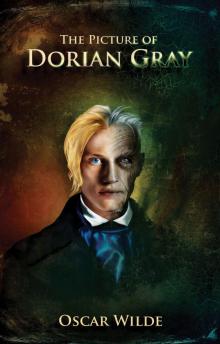 The Picture of Dorian Gray
The Picture of Dorian Gray The Importance of Being Earnest
The Importance of Being Earnest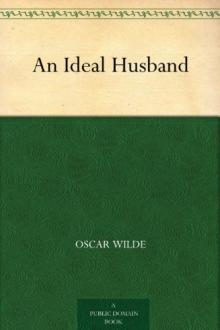 An Ideal Husband
An Ideal Husband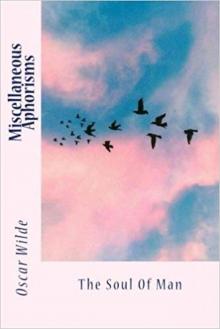 Miscellaneous Aphorisms; The Soul of Man
Miscellaneous Aphorisms; The Soul of Man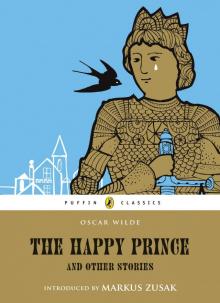 The Happy Prince and Other Tales
The Happy Prince and Other Tales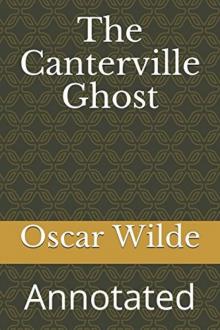 The Canterville Ghost: Annotated
The Canterville Ghost: Annotated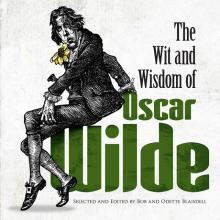 The Wit and Wisdom of Oscar Wilde
The Wit and Wisdom of Oscar Wilde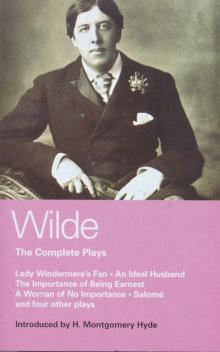 The Complete Plays
The Complete Plays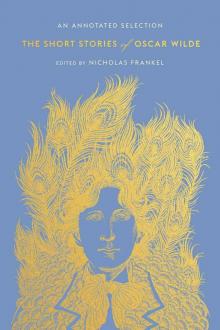 The Short Stories of Oscar Wilde
The Short Stories of Oscar Wilde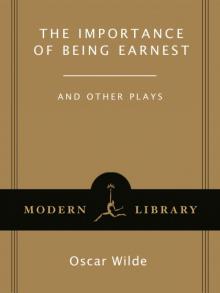 The Importance of Being Earnest: And Other Plays
The Importance of Being Earnest: And Other Plays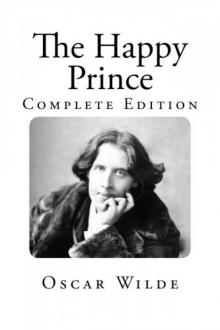 The Happy Prince (Oscar Wilde Classics)
The Happy Prince (Oscar Wilde Classics)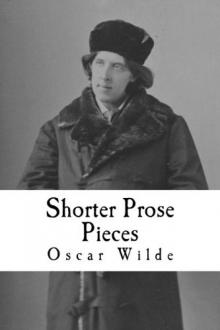 Shorter Prose Pieces
Shorter Prose Pieces Importance of Being Earnest
Importance of Being Earnest Selected Tales: Shorter Prose Pieces
Selected Tales: Shorter Prose Pieces The Penny Dreadfuls MEGAPACK™
The Penny Dreadfuls MEGAPACK™ The Complete Short Fiction
The Complete Short Fiction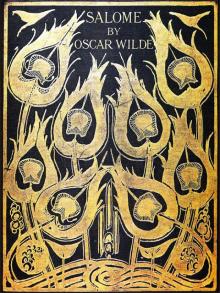 The Illustrated Salomé in English & French (with Active Table of Contents)
The Illustrated Salomé in English & French (with Active Table of Contents)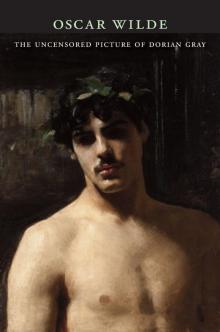 The Uncensored Picture of Dorian Gray
The Uncensored Picture of Dorian Gray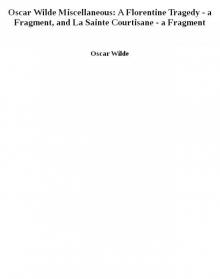 Oscar Wilde Miscellaneous: A Florentine Tragedy - a Fragment, and La Sainte Courtisane - a Fragment
Oscar Wilde Miscellaneous: A Florentine Tragedy - a Fragment, and La Sainte Courtisane - a Fragment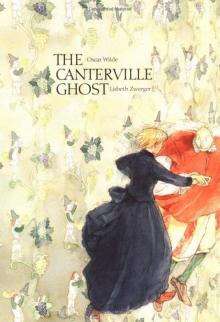 The Canterville Ghost (Illustrated by WALLACE GOLDSMITH)
The Canterville Ghost (Illustrated by WALLACE GOLDSMITH) Complete Works of Oscar Wilde
Complete Works of Oscar Wilde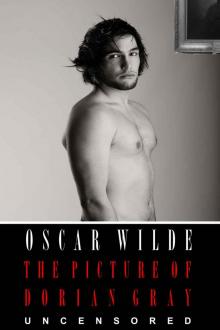 The Picture of Dorian Gray: The Uncensored Original Text (Annotated) (First Ebook Edition)
The Picture of Dorian Gray: The Uncensored Original Text (Annotated) (First Ebook Edition) Fifty Shades of Dorian Gray
Fifty Shades of Dorian Gray Oscar Wilde's Stories for All Ages
Oscar Wilde's Stories for All Ages The Happy Prince & Other Stories (Puffin Classics Relaunch)
The Happy Prince & Other Stories (Puffin Classics Relaunch)